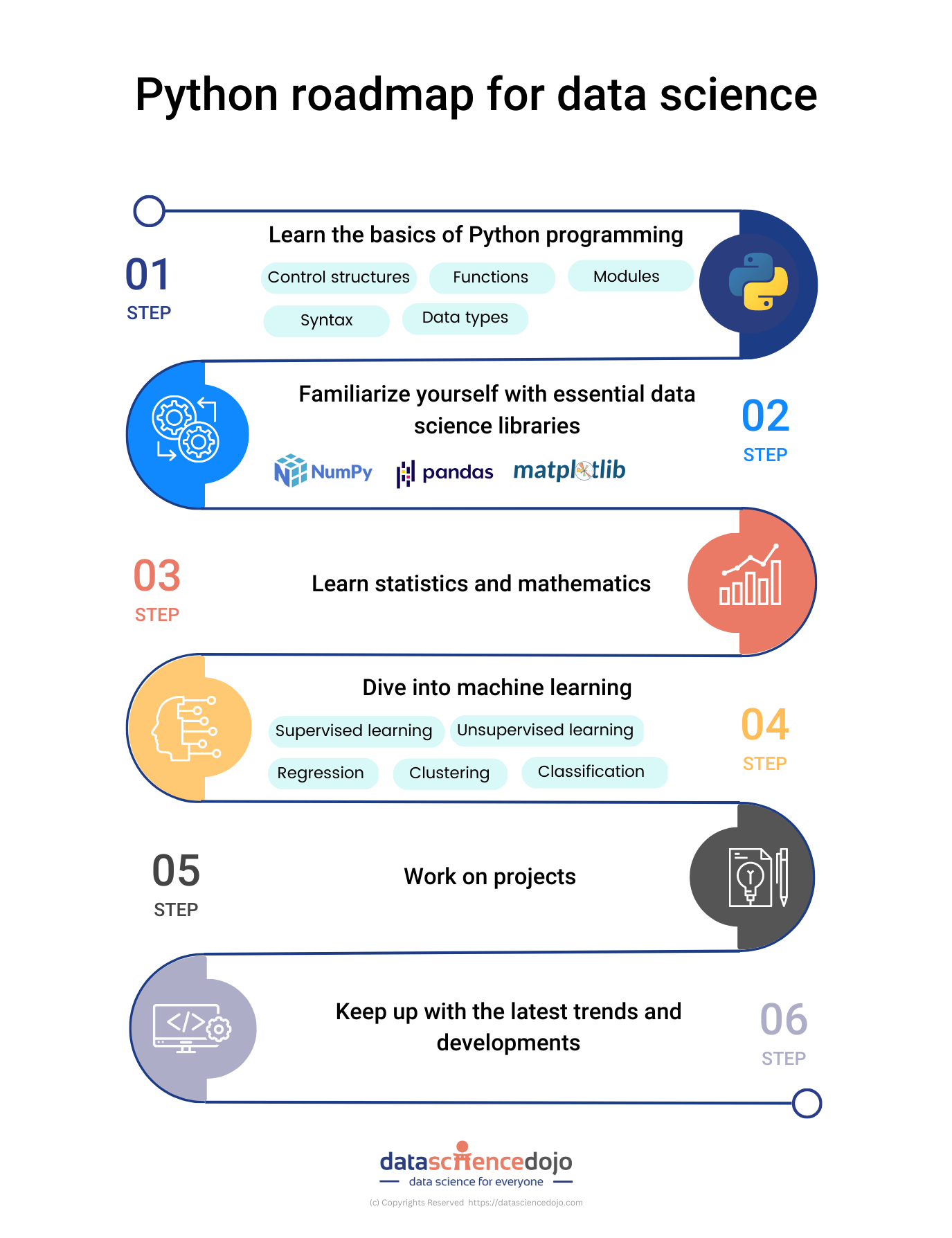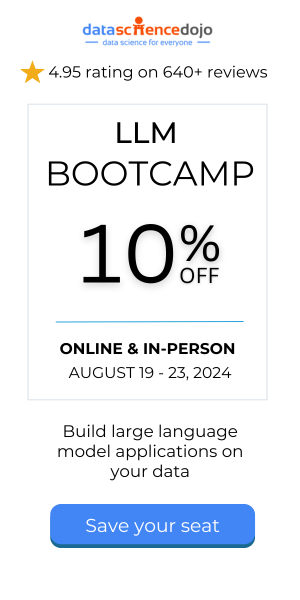Python has become a popular programming language in the data science community due to its simplicity, flexibility, and wide range of libraries and tools. With its powerful data manipulation and analysis capabilities, Python has emerged as the language of choice for data scientists, machine learning engineers, and analysts.
By learning Python, you can effectively clean and manipulate data, create visualizations, and build machine-learning models. It also has a strong community with a wealth of online resources and support, making it easier for beginners to learn and get started.
This blog will navigate your path via a detailed roadmap along with a few useful resources that can help you get started with it.

Step 1. Learn the basics of Python programming
Before you start with data science, it’s essential to have a solid understanding of its programming concepts. Learn about basic syntax, data types, control structures, functions, and modules.
Step 2. Familiarize yourself with essential data science libraries
Once you have a good grasp of Python programming, start with essential data science libraries like NumPy, Pandas, and Matplotlib. These libraries will help you with data manipulation, data analysis, and visualization.
This blog lists some of the top Python libraries for data science that can help you get started.
Step 3. Learn statistics and mathematics
To analyze and interpret data correctly, it’s crucial to have a fundamental understanding of statistics and mathematics. This short video tutorial can help you to get started with probability.
Additionally, we have listed some useful statistics and mathematics books that can guide your way, do check them out!
Step 4. Dive into machine learning
Start with the basics of machine learning and work your way up to advanced topics. Learn about supervised and unsupervised learning, classification, regression, clustering, and more.
This detailed machine-learning roadmap can get you started with this step.
Step 5. Work on projects
Apply your knowledge by working on real-world data science projects. This will help you gain practical experience and also build your portfolio. Here are some Python project ideas you must try out!
Step 6. Keep up with the latest trends and developments
Data science is a rapidly evolving field, and it’s essential to stay up to date with the latest developments. Join data science communities, read blogs, attend conferences and workshops, and continue learning.
Our weekly and monthly data science newsletters can help you stay updated with the top trends in the industry and useful data science & AI resources, you can subscribe here.
Additional resources
- Learn how to read and index time series data using Pandas package and how to build, predict or forecast an ARIMA time series model using Python’s statsmodels package with this free course.
- Explore this list of top packages and learn how to use them with this short blog.
- Check out our YouTube channel for Python & data science tutorials and crash courses, it can surely navigate your way.
By following these steps, you’ll have a solid foundation in Python programming and data science concepts, making it easier for you to pursue a career in data science or related fields.
For an in-depth introduction do check out our Python for Data Science training, it can help you learn the programming language for data analysis, analytics, machine learning, and data engineering.
Wrapping up
In conclusion, Python has become the go-to programming language in the data science community due to its simplicity, flexibility, and extensive range of libraries and tools.
To become a proficient data scientist, one must start by learning the basics of Python programming, familiarizing themselves with essential data science libraries, understanding statistics and mathematics, diving into machine learning, working on projects, and keeping up with the latest trends and developments.
With the numerous online resources and support available, learning Python and data science concepts has become easier for beginners. By following these steps and utilizing the additional resources, one can have a solid foundation in Python programming and data science concepts, making it easier to pursue a career in data science or related fields.






